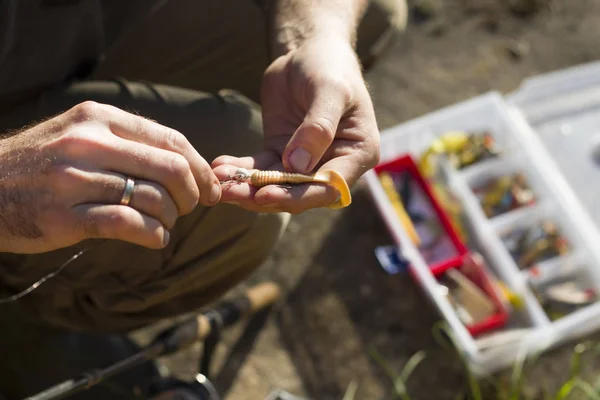When it comes to bass fishing, one technique that stands out is using a jig. This versatile and effective lure can entice even the most finicky bass.
In this comprehensive guide, I will explore the world of jig fishing, exploring the various techniques, tackle, and strategies needed to successfully catch bass on a jig.
So, grab your gear and let’s dive in!
Table of Contents
I. Understanding Bass Behavior

A. The Bass’s Natural Habitat
To become a successful angler, it’s crucial to understand the natural habitat of bass.
Bass prefer areas with cover and structure such as submerged vegetation, fallen trees, and rock formations. These provide shelter and ambush points for the fish.
Knowing their preferred habitats allows you to target these areas with your jig presentation and increase your chances of hooking a bass.
B. Feeding Habits of Bass
Bass are highly adaptable and opportunistic predators that exhibit various feeding habits. Understanding their feeding patterns and preferences is essential for successful jig fishing.
By adjusting your jigging techniques to match their feeding behaviours, you can increase your chances of enticing strikes. Here are some key feeding habits of bass to consider:
- Ambush Predators: Bass is well-known for their ambush tactics. They often lie in wait, concealed in cover or structure, and strike at unsuspecting prey that comes within their striking range. They use their excellent camouflage and stealth to ambush prey like baitfish, crayfish, or insects. When jig fishing, target areas with potential ambush points such as weed beds, fallen trees, or submerged vegetation. Cast your jig near these areas and work it slowly, mimicking the movement of an easy meal.
- Chasing Down Fast-Moving Targets: Bass is capable of explosive bursts of speed and will actively chase down fast-moving prey. They are particularly drawn to schools of baitfish or other swimming prey.
When the bass is in an aggressive feeding mood, consider using a faster, more erratic retrieve. Experiment with a faster jigging motion or employ techniques like ripping or jerking the jig to imitate the movements of fleeing prey. This sudden change in presentation can trigger reaction strikes from the bass.
- Bottom Feeders: Bass also feed on bottom-dwelling creatures such as crawfish, sculpins, or gobies. They use their keen sense of smell and lateral line system to locate and target these prey items.
When fishing with a jig, pay attention to the bottom structure and substrate. Bounce your jig along the bottom, mimicking the movements of a crawfish or other bottom-dwelling creature. This slow and crawling presentation can entice bass to strike.
By adapting your jigging techniques to match the feeding habits of bass, you can effectively entice strikes and improve your success rate. Remember to observe the behaviour of the bass and be willing to experiment with different retrieves and presentations until you find what triggers the most bites.
II. Choosing the Right Jig
A. Types of Bass Jigs
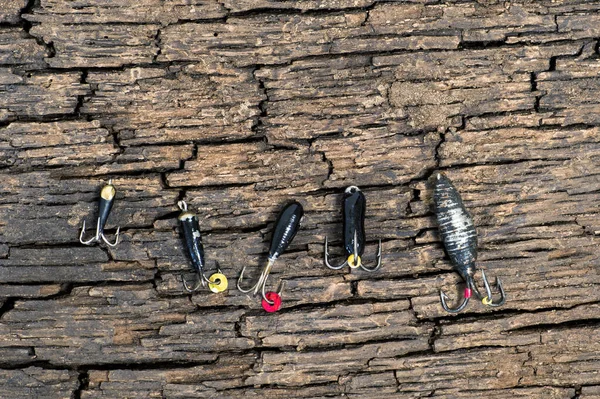
Bass jigs come in a wide variety of styles, each designed to excel in specific fishing situations. From flipping jigs to football jigs, finesse jigs to swim jigs, there’s a jig for every scenario.
Understanding the features and applications of each jig type empowers you to make informed decisions based on the conditions and the bass’s behaviour.
For that, read our most recommended Jig Types<Link>
B. Selecting the Appropriate Jig for the Conditions
The success of your jig fishing depends on selecting the right jig for the prevailing conditions. Factors such as water clarity, temperature, and season play a crucial role in determining the most effective jig to use.
Adapting to these variables ensures that your presentation mimics natural prey, making it irresistible to bass.
The best rigs…
III. Mastering Jig Fishing Techniques
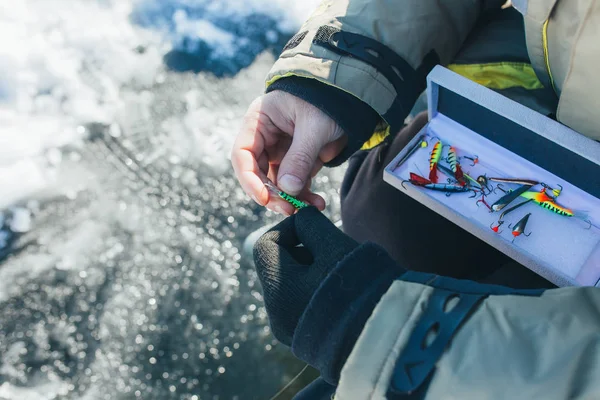
A. Casting and Presentation
Mastering the art of casting and presenting your jig is essential for enticing bass to strike. A smooth and accurate cast allows you to reach your target zone effectively.
Once the jig is in position, using an active presentation technique, such as hopping or dragging, can trigger a reaction bite.
Varying your retrieve speed and adding pauses to imitate a wounded or fleeing prey will entice bass to strike.
B. Retrieval Techniques
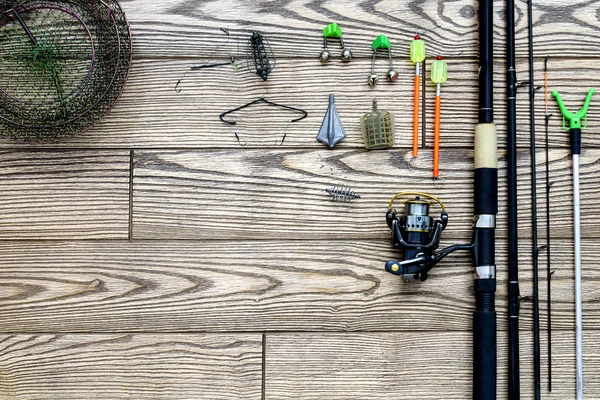
1. Slow Dragging
When the bass is in a lethargic mood, slow dragging can be the key to success.
By maintaining contact with the bottom and slowly inching the jig forward, you create a tempting, easy meal for bass.
The slow and deliberate movement can trigger strikes from even the most uninterested fish.
2. Hopping and Bouncing
For more active bass, the hopping and bouncing technique can be highly effective.
By lifting and dropping the jig in short, sharp movements, you create an enticing action that imitates a prey fish or crayfish.
This erratic motion triggers the predatory instincts of the bass and elicits aggressive strikes.
3. Pitching and Flipping
When targeting specific structures or covers, such as docks or submerged vegetation, pitching and flipping are go-to techniques.
By accurately pitching the jig close to the target and allowing it to sink naturally, you can entice bass to hide in these areas.
This precise presentation technique gives you better control and increases your chances of a successful hookset.
IV. Understanding Jig Trailers and Skirts
A. Jig Trailers
Jig trailers play a crucial role in enhancing the presentation of your jig.
They add extra bulk, action, and scent to entice bass further.
Soft plastic trailers, such as creature baits or crawfish imitations, are popular choices.
Experimenting with different colours, sizes, and trailer styles allows you to find the combination that drives bass wild.
B. Jig Skirts
Jig skirts not only add visual appeal but also provide a lifelike representation of prey.
They create a natural silhouette and movement in the water, enticing bass to strike.
Customising jig skirts by adding or removing strands and selecting colour patterns that imitate local forage can increase your success rate.
V. Seasonal Strategies
A. Spring Tactics
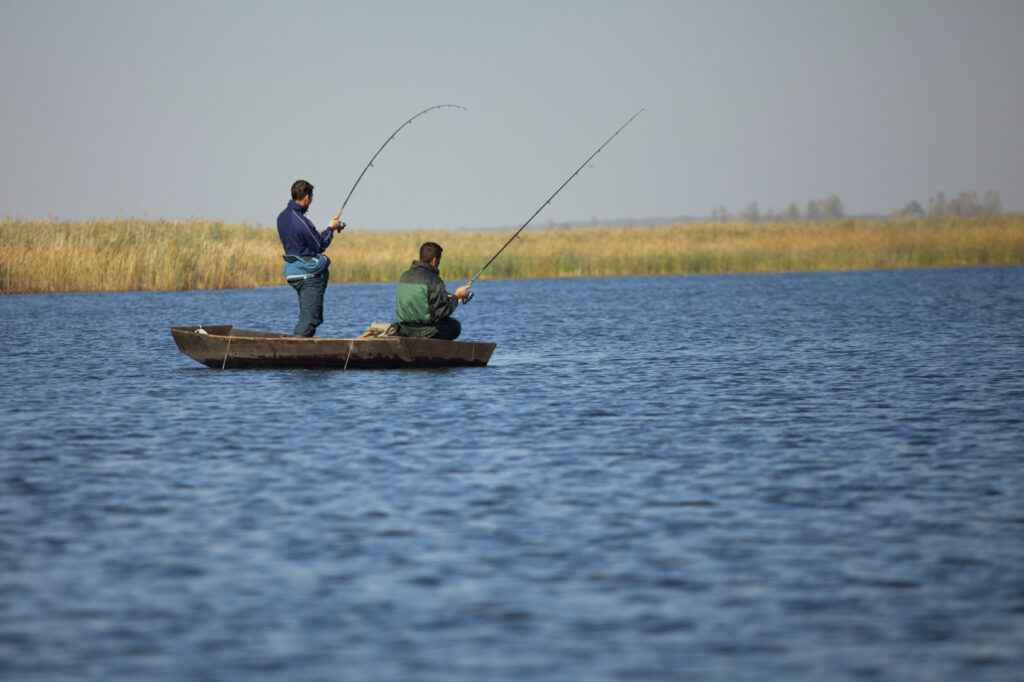
As the winter fades away, spring brings a renewed sense of energy and activity among bass.
They emerge from their winter lethargy and begin actively feeding to replenish their energy reserves.
This makes the spring season an excellent time for jig fishing. Here are some key tactics to employ during this period:
- Target Shallow Areas: During spring, bass move from their deeper winter haunts to shallow areas in search of warmer water and abundant prey. Focus your jig fishing efforts in these shallower zones, such as flats, coves, and shorelines. These areas provide ideal feeding grounds for bass as they prepare for the spawning season.
- Imitate Crawfish or Baitfish: Crawfish and baitfish are prominent food sources for bass in the spring. Choose jigs that mimic the natural appearance and movement of these prey. Opt for jig colours that resemble crawfish or baitfish patterns, such as brown, green pumpkin, or shad colours. Adding a trailer with crawfish or minnow-like characteristics enhances the realism and enticement of your presentation.
- Structure and Cover: Bass in the spring seek out areas with structure and cover. Look for brush piles, fallen trees, submerged vegetation, or rocky structures. These locations provide shelter and ambush points for bass. Casting your jig near these structures and working it through the cover can entice bass to strike. Be patient and thoroughly fish these areas, as bass may be tucked away within the structure.
- Vary Your Retrieval Speed: Experiment with different retrieval speeds to determine the most effective presentation for the day. Start with a slow and methodical retrieve, mimicking the movements of crawfish or injured baitfish. If the bass is more active, try a faster and more erratic retrieve to trigger reaction strikes. Pay attention to the bass’s response and adjust accordingly.
- Observe Water Temperature: Monitoring the water temperature is crucial during the spring season. Bass becomes more active as the water warms up, and their behaviour changes accordingly. Use a thermometer to gauge the temperature and target areas where the water is slightly warmer than the surrounding areas. These warmer pockets attract bass and increase your chances of success.
- Be Mindful of Spawning Grounds: As spring progresses, the bass begins their spawning rituals. Be mindful of their spawning grounds and avoid disturbing them during this sensitive time. Respect any posted spawning areas or local regulations to help preserve the bass population for future generations.
B. Summer Strategies
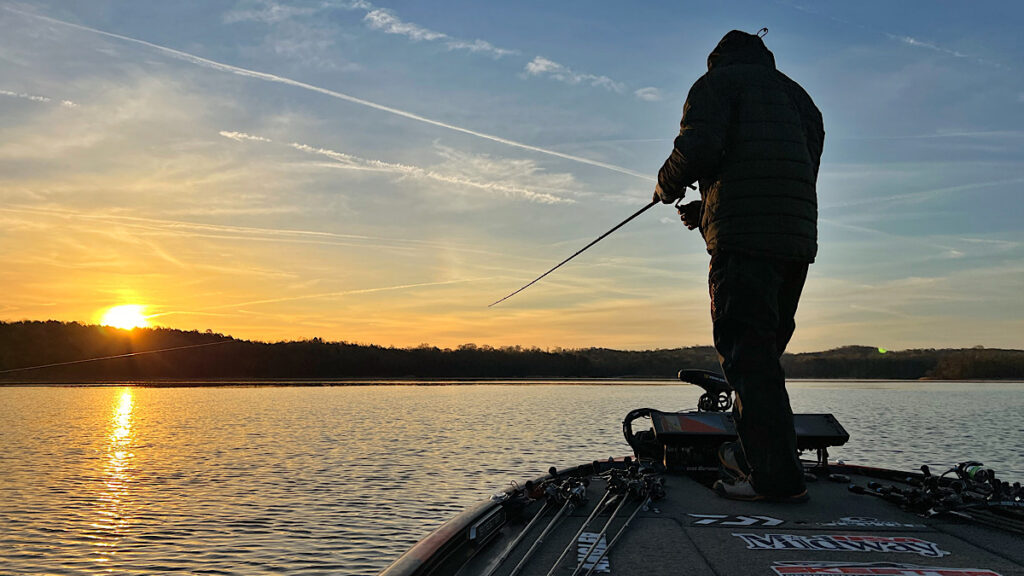
During the summer months, bass tends to seek cooler water and adjust their feeding patterns accordingly.
To effectively catch bass on a jig during this season, consider the following strategies:
- Deep Water Focus: As the temperatures rise, the bass often moves to deeper water in search of cooler temperatures and an abundance of prey. Shift your focus to offshore structures such as submerged points, humps, ledges, or underwater drop-offs. These structures provide bass with shade, cover, and access to deeper water. Targeting these areas increases your chances of encountering actively feeding bass.
- Heavier Jig Weights: To reach the desired depths and effectively present your jig in deep water, opt for jigs with heavier weights. A heavier jig allows you to maintain contact with the bottom and feel the structure as you work the lure. Use jig weights appropriate for the depth and current conditions you are fishing in.
- Slow Dragging Technique: In the summer, when bass metabolism is high, a slow dragging technique can be highly effective. With this technique, make bottom contact and gradually drag the jig along the structure. Keep a steady but slow retrieve, allowing the jig to mimic a crawfish or other bottom-dwelling prey. The slow movement can trigger a reaction bite from bass looking for an easy meal.
- Stroking Technique: Another productive technique for summer jig fishing is the stroking technique. This involves lifting the jig off the bottom in short, sharp movements and allowing it to fall back down. The quick and aggressive action imitates a baitfish darting and fleeing, enticing bass to strike. Vary the speed and rhythm of your strokes to find what triggers the most bites.
- Pay Attention to Water Clarity: In the summer, water clarity can vary depending on weather conditions and algal blooms. Adjust your jig colour and presentation based on the water clarity. In clear water, natural colours like green pumpkin or brown can be effective. In stained or murky water, consider using brighter or more contrasting colours to improve visibility and increase the chances of a strike.
- Time of Day: In the summer, bass activity tends to be more pronounced during low-light periods, such as early morning and late evening. Target these times for your jig fishing endeavours, as bass are more likely to be actively feeding. However, keep in mind that bass can be caught on jigs throughout the day, so adapt your techniques and strategies accordingly.
By implementing these summer strategies, you can increase your success rate when jig fishing for bass. Remember to adjust your techniques based on the specific conditions of the waterbody you are fishing, and be adaptable in your approach to cater to the bass’s behaviour during the summer season.
C. Fall Approaches
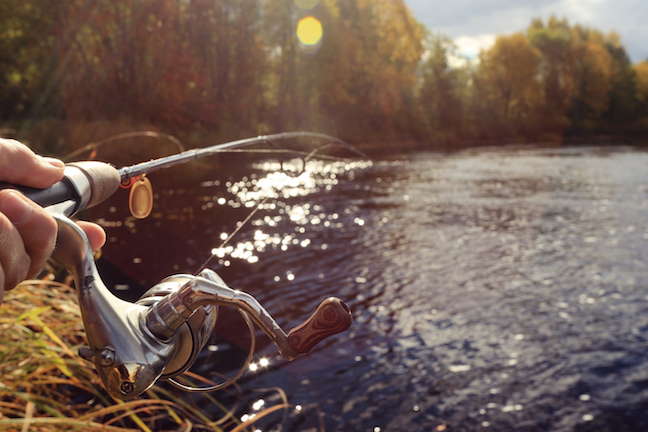
Fall is a transitional period for bass as they prepare for winter. As the summer gives way to fall, bass undergoes a transition in their behaviour and feeding patterns.
They become more active and feed voraciously to build energy reserves for the upcoming winter.
To effectively catch bass on a jig during this season, consider the following strategies:
- Shallow and Intermediate Depth Areas: During the fall, bass can be found in both shallow and intermediate depth areas. Target areas such as flats, points, and drop-offs that provide easy access to both shallow and deeper water. Bass often move along these areas as they migrate towards their wintering grounds. Focus your jig-fishing efforts on these zones.
- Baitfish and Crawfish Imitations: Fall is a time when bass actively feeds on baitfish and crawfish. Choose jigs that imitate these prevalent prey species. Opt for colours and patterns that closely resemble the local forage. Jig trailers such as swimbaits or crawfish imitations can enhance the realism and enticement of your presentation.
- Use a smaller bait: Bass will often eat smaller baits in winter, so use a jig that is 1/4 ounce or smaller.
- Use the live bait if you can: Live bait can be very effective in winter, especially if you can find a baitfish that is active in cold water.
- Locations near Creek Channels: In the fall, bass tend to follow creek channels and use them as migration routes. Target areas near creek channels, as they serve as travel corridors for bass moving towards deeper water. Concentrate your jig fishing around bends, points, or submerged structures along these channels.
- Focus on Rocky Structures: Bass seek refuge in rocky structures during the fall season. These structures provide cover, ambush points, and access to baitfish. Target areas with rocky structures, such as rock piles, boulders, or riprap shorelines. Jigs bumped along these structures can trigger reaction strikes from bass.
- Adjust to Changing Water Conditions: Fall brings changing water conditions, including cooler temperatures and potential changes in water clarity. Adjust your jig colour and presentation accordingly. In clearer water, natural and subtle colours like green pumpkin or brown can be effective. In stained or murky water, consider using brighter colours or those with more contrast to improve visibility.
- Be Mindful of Weather Patterns: Fall weather can be unpredictable, with temperature fluctuations and changing weather patterns. Pay attention to these factors and adjust your fishing techniques accordingly. For example, during stable weather periods, the bass may be more active and willing to chase faster-moving jigs. On colder or windy days, a slower presentation may be more effective.
By employing these fall strategies, you can increase your chances of success when jig fishing for bass during this transitional season. Remember to adapt your techniques based on the specific conditions of the waterbody you are fishing and be observant of the bass’s behaviour as they prepare for winter.
D. Winter Adaptations
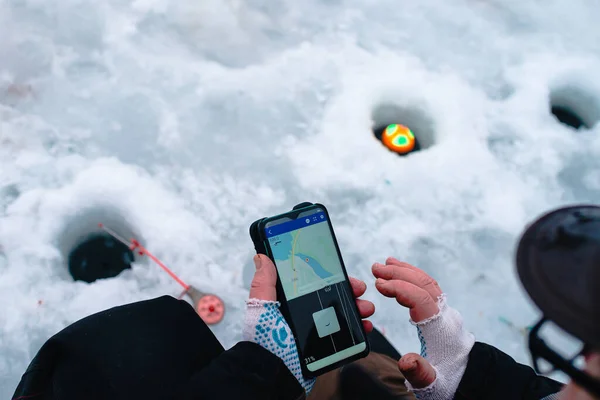
During the winter months, bass becomes less active and their metabolism slows down. They seek out deeper water and become more selective in their feeding. To catch bass on a jig during this challenging season, consider the following adaptations:
- Downsize Your Jig: In winter, the bass is less likely to chase larger prey. Downsize your jig to a smaller profile and opt for lighter weights. A finesse jig with a compact skirt and a smaller trailer can be highly effective. The smaller presentation mimics the limited forage available during the colder months.
- Slow and Methodical Approach: Winter bass is sluggish and prefers slow presentations. Fish your jig with a slow and deliberate retrieve, allowing it to stay in the strike zone for longer periods. Take your time to work the jig effectively, keeping it close to the bottom. This slower approach gives bass ample time to inspect and strike your lure.
- Target Deeper Structures: In winter, bass seek out deeper structures that provide them with stable water temperatures. Focus your efforts around rock piles, drop-offs, submerged timber, or underwater ledges. These areas provide cover, ambush points, and access to deeper water. Bass will often suspend near or relate to these structures, making them prime jig fishing locations.
- Vertical Jigging Technique: Vertical jigging is a highly effective technique for winter bass fishing. It involves dropping your jig straight down below the boat or near the structure and then lifting and dropping it in a vertical motion. This presentation imitates a struggling or dying prey, enticing bass to strike. Maintain a slow and controlled rhythm during the jig’s ascent and descent.
- Pay Attention to Water Temperature: Water temperature plays a crucial role in winter bass fishing. Monitor the water temperature closely, as bass activity and feeding patterns are closely tied to it. Focus on areas where the water temperature is slightly warmer than the surrounding areas. These warmer pockets can attract bass seeking relief from the colder water.
- Be Patient and Persistent: Winter bass fishing requires patience and persistence. The bites may be infrequent, and you may need to cover more water to locate actively feeding bass. Stay committed to your jig fishing approach and keep experimenting with different techniques and presentations until you find a productive pattern.
By adapting your jig fishing strategies to the winter conditions, you can still catch bass during this challenging season. Remember to adjust your techniques based on the specific conditions of the waterbody you are fishing and be prepared to fish slower and more methodically. Winter bass fishing requires a focused and patient approach, but the rewards can be well worth the effort.
VI. Tackling Challenges and Problem-Solving
A. Fishing in Heavy Cover
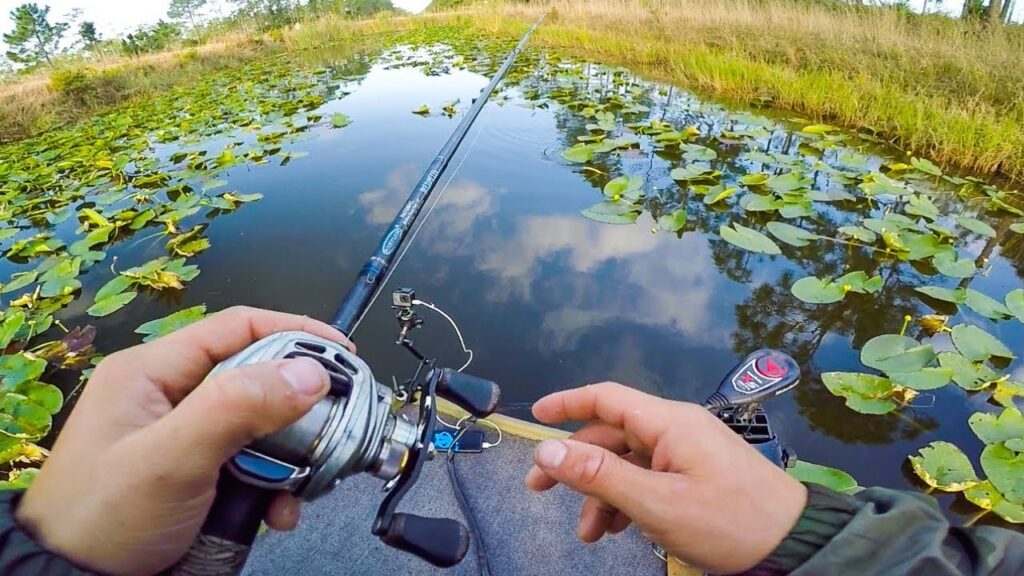
When fishing in heavy covers, such as dense vegetation or thick brush, modifications to your jig setup and techniques are necessary. Use weedless jigs with features like brush guards to prevent snagging.
Use techniques like pitching, flipping, or punching to penetrate the cover and reach the bass hiding within.
B. Dealing with Tough Conditions
Adverse weather conditions or challenging environments can pose difficulties for jig fishing.
During windy days, adjusting your casting angle and using heavier jigs can help you maintain control and precision.
In muddy or stained water, opt for jigs with brighter or contrasting colours to improve visibility. Adapting to these conditions increases your chances of success.
VII. Tips for Success
A. Paying Attention to Details
Jig fishing requires attention to detail. Ensure that your jig trailer matches the profile of local prey. Experiment with different colours and sizes to find the combination that triggers strikes.
Pay attention to water temperature, clarity, and other environmental factors that influence bass behaviour. Small adjustments can make a big difference in your catch rate.
B. Observing and Learning from Bass Behavior
Nature provides valuable lessons for anglers. Observing the behaviour of bass can help you understand their preferences and adjust your techniques accordingly.
Pay attention to their feeding patterns, movements, and reactions to different presentations. This knowledge will sharpen your skills and make you a more successful angler.
Conclusion
Unlocking the secrets of catching bass on a jig opens up a world of possibilities for anglers. With a solid understanding of bass behaviour, the proper jig selection, and mastery of various jig fishing techniques, you’ll have the tools to consistently hook bass on a jig.
Remember to adapt your strategies based on the season and prevailing conditions for optimal success. Now, go out there and reel in those lunkers!
FAQs
Q1. What is the best time of day to fish with a jig for bass?
Bass can be caught on jigs throughout the day, but early morning and late evening are often prime times. During these periods, bass are more active and more likely to strike. However, bass can be caught on jigs at any time of the day if you adjust your techniques and presentations to match their behaviour.
Q2. How do I choose the right jig colour?
Jig colour selection depends on water clarity and the bass’s feeding preferences. In clear water, natural colours like green pumpkin or brown often work well. In stained or muddy water, brighter colours like chartreuse or black and blue can improve visibility. Additionally, consider matching the colour to the local forage, such as bluegill or crawfish, to increase your chances of success.
Q3. Can I use a jig in deep water?
Absolutely! Jigs are versatile lures that can be effectively used in deep water. Choose jigs with heavier weights to reach the desired depth and adjust your retrieve technique accordingly. Techniques, like slow dragging or stroking, can entice deep-water bass to strike.
Q4. What fishing rod and line should I use for jig fishing?
For jig fishing, a medium to medium-heavy spinning or baitcasting rod with a sensitive tip is ideal. Pair it with a quality reel that matches the rod’s specifications. As for the line, many anglers prefer fluorocarbon for its low visibility and sensitivity. However, monofilament or braided line can also be used, depending on the fishing conditions and personal preference.
Q5. Are there any special tips for setting the hook when using a jig?
Setting the hook with a jig requires a firm and decisive hookset. When you feel a strike, quickly reel in any slack line and then sharply pull the rod tip upward. This motion drives the hook into the bass’s mouth. Remember to maintain steady pressure while reeling in the fish to prevent it from throwing the hook.

